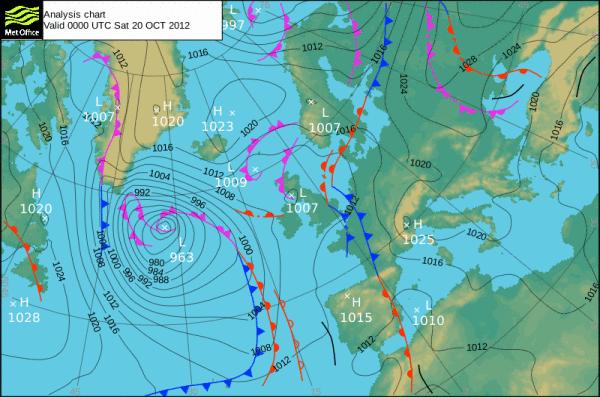ron-t kayaking blog
21 October 2012 .............. Falls of Lora - with some unusual tidal conditions
The last couple of days have been a bit unusual at the Falls of Lora - the tides have been much higher than predicted, and the surfing has been excellent.
On Saturday morning, the predicted height was 3.7 metres - but it was more like 3.9 - 4.0 metres. That isn`t that uncommon, what was much more unusual was that the high tide height was virtually unchanged for nearly 3 hours. It was a wee bit over the top of the wee post when I arrived, and it was still there when I left.
The surfing beside the north pier was good, it was quite a fast deep wave, and the nose of the Anas Acuta was just digging in quite a lot.I didn`t think of until quite late on, by which time the wave had flattened out a bit - I started to wonder if I could get the bow of the AA to pearl - it is shaped somewhat like the bow of a squirt boat, with a low volume. In case you don`t know, in the squirt boat world, pearling is a technique where you surf a river wave with the bow deep into the downhill current. In the sea kayak world, pearling is regarded as a bad thing, and boats are designed with a lot of volume in the bow to stop it happening.
Fortunately the Anas Acuta has escaped modern boat design.
Out in the middle, I caught the second wave and had quite a long surf on that.
I finished off with a play around with self rescues - it is a good idea to keep doing them every now and then so they work when you really need them.
-----------------------------------
On Sunday morning the predicted tide height was 3.4 metres - usually too low for any surfing, but the wave beside the north pier was in good form, providing some easy going surfing, and several paddle twirls as well.
Out in the middle it was magic - I caught the first wave, and there I stayed. I don`t know for how long, certainly over five minutes, but probably less than ten. I eventually lost it mainly because the wave was continually flattening all the time I was on it, and it just got too flat to surf. I couldn`t catch any of the other waves, and didn`t bother going round for a second try.
Catching the first wave is more exciting than the later waves - you are sitting on the wave just a couple of metres or so from the big drop right in front of you - it is quite an impressive sight.
I went back to the car park, and found some of the paddlers who I had met at the Grey Dogs a couple of weeks ago, so we had some idle chat.
It was a good two days of surfing, and I think the surfing out in the middle was the best I have done in the Anas Acuta.
-----------------------------------
I think it is quite interesting to see why these oddities in tidal flow occur, and I think that the reason for the last couple of days is a big low sitting out in the middle of the Atlantic - here it is -

As before, the above image is Crown Copyright, and is reproduced here under the terms of the Open Government Licence, which requires me to include the following text -
"Contains public sector information licensed under the Open Government Licence v1.0"
This low is centered right over the centre of rotation of the tides in the North Atlantic. There is a common misunderstanding that the tides on each side of the North Atlantic are caused by the water in the Atlantic sloshing backwards and forwards between America and Europe. It doesn`t - the tides actually rotate around a point right in the middle of the North Atlantic, like the spokes of a bicycle wheel. At the centre of rotation, there is no tide - the further you are away from the centre, the larger the tidal range.
The spokes of the wheel rotate anti-clockwise in the northern hemisphere, and in the southern hemisphere they rotate clockwise around the various centres of rotation down there.
So we had a tidal wheel pushing the tides around anti-clockwise, and right on top of the wheel, we had a low pressure, which was also pushing the water around anti-clockwise. So we got these bigger than predicted and longer lasting high tides.
Well that`s my theory !